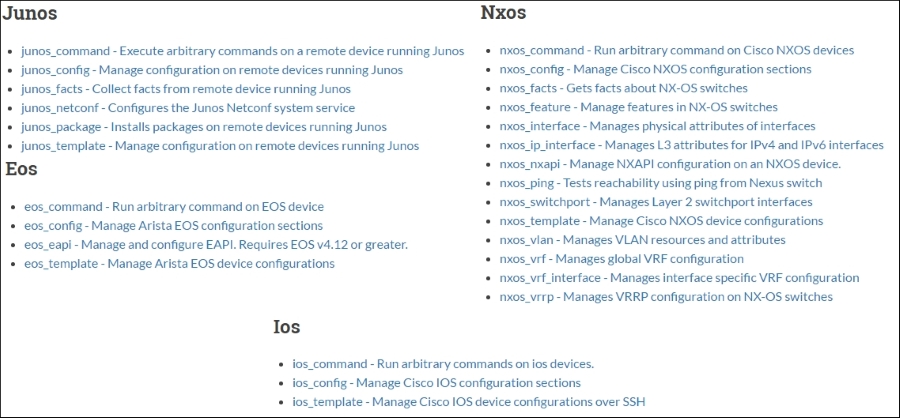Since the release of Ansible 2.0, the Ansible configuration management tool been packaged with some of the core networking modules from Arista, Citrix, Cumulus, and Juniper. Ansible can be used to edit configuration for any network device. It isn't restricted to just these modules. Ansible Galaxy has a wide range of roles that have been developed by the open source community.
A subnet of the Ansible 2.x networking modules can be shown in the following screenshot focusing upon the Juniper Junos, Arista Eos, Cisco Nxos, and Ios:

Ansible 2.x has sought to simplify networking modules by giving them a standard set of operations across all modules to make it feel more intuitive to network engineers. As many network engineers are not familiar with configuration management tooling, having a set of standards across modules simplifies the initial barrier to entry. As network engineers are able to see commands that they would utilize everyday being...



